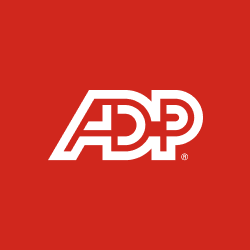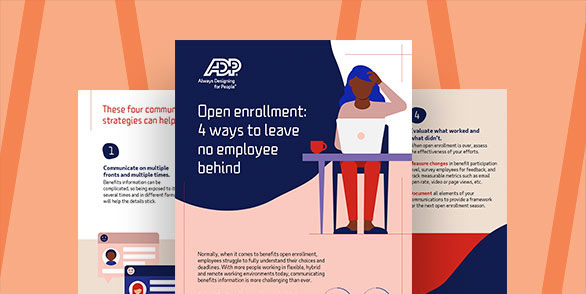Employer-sponsored benefits can help attract and retain employees, but group health insurance plans may be too costly for some small businesses. The good news is that there are alternatives. A qualified small employer health reimbursement arrangement (QSEHRA) is one option for certain employers who want to offer health care perks to employees without breaking their budget.
Table of Contents
What is a qualified small employer HRA (QSEHRA)?
A QSEHRA permits eligible small businesses that don’t sponsor group health insurance or any excepted benefits, such as dental or vision care, to reimburse their employees for qualified medical expenses. These reimbursements are tax free as long as the employees are enrolled in health plans that meet the minimum essential coverage (MEC) requirements of the Affordable Care Act (ACA). The business must also not be considered an applicable large employer (ALE), e.g., it has less than 50 full-time employees.
How do QSEHRAs work for a small employer?
Under the basic terms of a QSEHRA, employees with minimum essential health coverage submit qualified medical expenses and supporting documentation to their employer, who then reimburses them with tax-free money up to an annual maximum amount. To be fully compliant with federal guidelines, however, certain requirements must be met before costs are covered.
QSEHRA requirements
Because QSEHRA is not a group health plan, it’s governed by a different set of rules. Some of the requirements for employers and employees are as follows:
- Reimbursement amounts are set
Employers have some leeway to decide how much they will contribute to a QSEHRA. There is no reimbursement minimum, but the IRS does enforce annual maximums per employee – one for individual health insurance coverage and another for family coverage. If any employees don’t use their full QSEHRA balance, employers keep the remaining money and may roll it over to the following year. - Terms are applied to all eligible employees uniformly
Uniformity does not mean that one employee cannot receive more in reimbursements than another employee (up to the annual maximum). The IRS permits differences in payments based on age and single coverage vs. family coverage. What uniformity does mean is that employers may not reimburse all qualified medical expenses for one category of employees and reimburse only a portion of qualified medical expenses for another category of employees. - Written notices are provided
Employers offering a QSEHRA must provide written notice to eligible employees within at least 90 days prior to each new year. If any employees are ineligible at that time, they’re required to receive written notice on the day that they become eligible. Failure to provide written notifications can result in monetary penalties. - Minimum essential coverage is verified
Employees and anyone else covered under their plan can only be reimbursed through a QSEHRA after they’ve provided proof that their health insurance meets MEC standards. There are two acceptable forms of evidence:- Official documentation from an insurance company, such as an insurance card or explanation of benefits/proof of coverage
- Attestation from the employee verifying that MEC exists, along with the date coverage began and the name of the insurer
- Medical expenses are substantiated
In addition to verifying MEC, employees are required to substantiate any medical expenses for which they seek reimbursement. Substantiation can be satisfied in the same way as flexible spending accounts (FSAs), which means employees must provide their employer with written documentation from a third party that details the nature of the medical expense and the total cost. They must also state, in writing, that the incurred expense was not already paid for by their insurance company. Any reimbursements that are processed without substantiation may be taxed. - Reimbursements are reported
The IRS requires employers to report QSEHRA on each eligible employee’s Form W-2, Wage and Tax Statement. This disclosure covers the total reimbursement for which the employee is entitled throughout the year, not the amount actually received.

Who can participate in a QSEHRA?
The IRS defines QSEHRA eligibility differently for employers and employees.
Employer qualifications
A small business generally may offer a QSEHRA as long as it does not:
- Have 50 or more full-time employees
- Sponsor a group health plan, an FSA or any excepted benefits
- Endorse a particular policy or health insurance carrier
Employee qualifications
Any employee of an eligible employer may qualify to partake in a QSEHRA. However, the IRS permits businesses to exclude part-time and seasonal workers, employees who are younger than 25 years of age and those who have not been with the employer for at least 90 days. Additional exclusions may apply to non-resident aliens and employees covered under a collective bargaining agreement.
Frequently asked questions about QSEHRA
What is the difference between an HRA and QSEHRA?
QSEHRAs are limited to small businesses that have less than 50 employees and don’t offer group health coverage. Health reimbursement arrangements (HRAs), on the other hand, are available to businesses of all sizes and must be accompanied by a group health plan in accordance with the ACA.
What can be reimbursed with QSEHRA?
The following types of medical expenses generally may be reimbursed through a QSEHRA:
- Insurance premiums (health, dental, vision, etc.)
- Coinsurance
- Deductibles
- Copays
- Prescription drugs
- Over-the-counter drugs
Is QSEHRA use it or lose it?
Employees eligible for a QSEHRA may not receive cash-out payments. If their medical expenses for the plan year do not reach the reimbursement limit, the employer keeps the remaining balance and may roll it over to the subsequent year.
This article is intended to be used as a starting point in analyzing QSEHRA and is not a comprehensive resource of requirements. It offers practical information concerning the subject matter and is provided with the understanding that ADP is not rendering legal or tax advice or other professional services.




